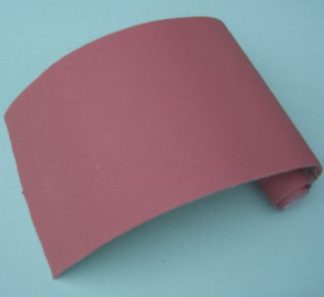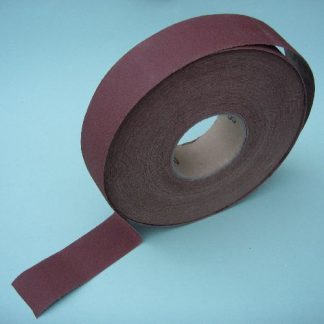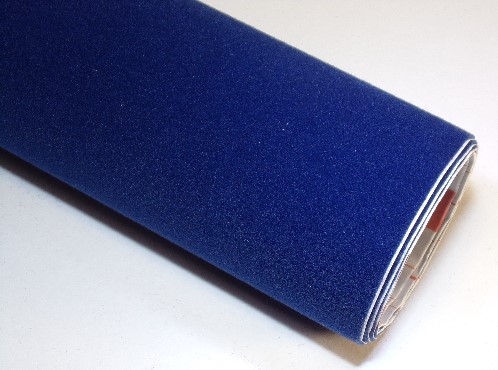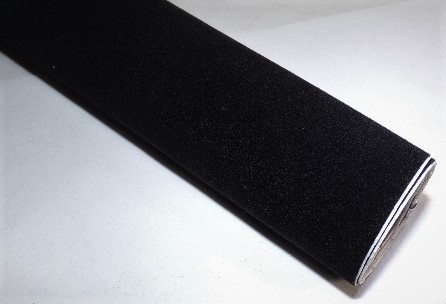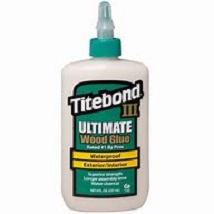-

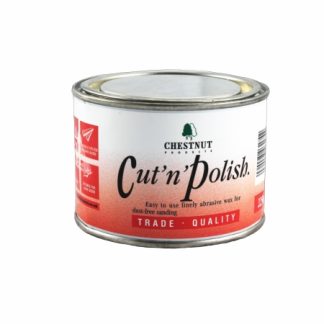 Cut’n’Polish is a blend of two waxes with a fine abrasive held in suspension within them. This is a soft wax designed to stay ‘wet’ slightly longer during application, allowing it to lubricate the abrasive to give a very fine cut to the timber and also to collect any dust generated during use and some subsequent sanding, preventing it from entering the workshop atmosphere. On bare wood; sand to 240 grit as normal, apply a coat of Cut’n’Polish with the lathe stopped, then switch on the lathe and buff to a soft sheen whilst smoothing the timber at the same time. On sealed wood apply after the sealer in the same way, polishing to a slightly higher shine. Cut’n’Polish dries almost immediately and can be overcoated with Friction Polish or any Chestnut waxes for a higher shine.
Cut’n’Polish is a blend of two waxes with a fine abrasive held in suspension within them. This is a soft wax designed to stay ‘wet’ slightly longer during application, allowing it to lubricate the abrasive to give a very fine cut to the timber and also to collect any dust generated during use and some subsequent sanding, preventing it from entering the workshop atmosphere. On bare wood; sand to 240 grit as normal, apply a coat of Cut’n’Polish with the lathe stopped, then switch on the lathe and buff to a soft sheen whilst smoothing the timber at the same time. On sealed wood apply after the sealer in the same way, polishing to a slightly higher shine. Cut’n’Polish dries almost immediately and can be overcoated with Friction Polish or any Chestnut waxes for a higher shine.
-

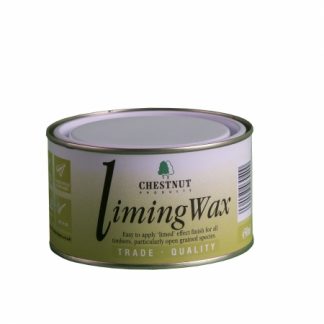 The white pigment in Liming Wax is Titanium Dioxide (TiO2) which gives it a brilliant white finish which will perfectly highlight open grain. Use Liming Wax on any open grained timber for a dramatic and striking effect which can be emphasised by using a stain or Ebonising Lacquer first. For an even better result use the Liming Brush first to open up the grain, allowing more Liming Wax to enter; spread the Liming Wax over the whole surface and then wipe off after a few minutes. The Liming Wax will stay in the open grain and the effect will be instantly visible. Whilst Liming Wax is a wax (obviously!), the wax is mainly a carrier for the white pigment. Therefore an overcoat of some kind is needed. WoodWax 22, Microcrystalline Wax, Finishing Oil or Hard Wax Oil are ideal for this and will lock the wax in place whilst keeping it clean and bright.
The white pigment in Liming Wax is Titanium Dioxide (TiO2) which gives it a brilliant white finish which will perfectly highlight open grain. Use Liming Wax on any open grained timber for a dramatic and striking effect which can be emphasised by using a stain or Ebonising Lacquer first. For an even better result use the Liming Brush first to open up the grain, allowing more Liming Wax to enter; spread the Liming Wax over the whole surface and then wipe off after a few minutes. The Liming Wax will stay in the open grain and the effect will be instantly visible. Whilst Liming Wax is a wax (obviously!), the wax is mainly a carrier for the white pigment. Therefore an overcoat of some kind is needed. WoodWax 22, Microcrystalline Wax, Finishing Oil or Hard Wax Oil are ideal for this and will lock the wax in place whilst keeping it clean and bright.
-

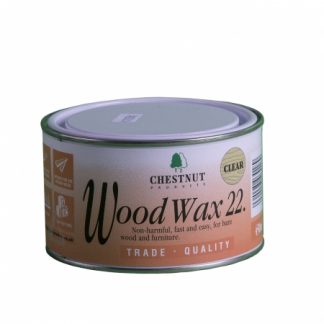
 WoodWax 22 contains beeswax (for shine) and carnauba wax (for hardness). Blended together in a solvent to produce a soft creamy paste. This makes it very easy to apply over any surface.
WoodWax 22 is quick drying enough to be applied onto unsealed wood but works best on one of Chestnuts sanding sealers.
If working on the lathe the wax should be applied with the lathe stopped.
Apply using a cloth (Safety Cloth or Stockinette works well with this); the wax spreads easily over the surface, after about 20 seconds it starts to drag slightly. This means it is ready to buff up; if you haven’t covered the whole piece by then don’t worry, just take a little more wax from the tin and carry on applying, the wax won’t mind waiting!
It’s best to buff WoodWax 22 as soon as you can; that way any surplus wax that might have been applied will be removed, allowing the shine to really show through.
If working on the lathe Safety Cloth should be used for the buffing process and let the lathe do the work for you. Off the lathe Safety Cloth or Stockinette can be used.
A second or even third coat of wax can be applied if required, leaving about twenty minutes between coats. After three coats the finish can become softer and will mark very easily.
WoodWax 22 contains beeswax (for shine) and carnauba wax (for hardness). Blended together in a solvent to produce a soft creamy paste. This makes it very easy to apply over any surface.
WoodWax 22 is quick drying enough to be applied onto unsealed wood but works best on one of Chestnuts sanding sealers.
If working on the lathe the wax should be applied with the lathe stopped.
Apply using a cloth (Safety Cloth or Stockinette works well with this); the wax spreads easily over the surface, after about 20 seconds it starts to drag slightly. This means it is ready to buff up; if you haven’t covered the whole piece by then don’t worry, just take a little more wax from the tin and carry on applying, the wax won’t mind waiting!
It’s best to buff WoodWax 22 as soon as you can; that way any surplus wax that might have been applied will be removed, allowing the shine to really show through.
If working on the lathe Safety Cloth should be used for the buffing process and let the lathe do the work for you. Off the lathe Safety Cloth or Stockinette can be used.
A second or even third coat of wax can be applied if required, leaving about twenty minutes between coats. After three coats the finish can become softer and will mark very easily.

-

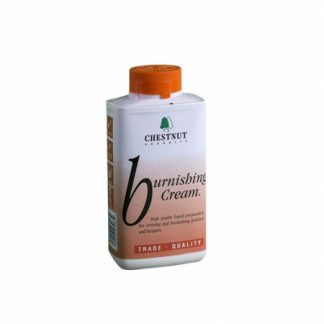 This creamy liquid has a very mild abrasive within it which acts like ‘liquid sandpaper’ on finished surfaces, cutting back and cleaning the finish and elevating it to a glossier, brighter finish. It can be used to smooth Cellulose Sanding Sealer prior to applying wax or Friction Polish, or, after allowing a suitable time to dry, on any of the lacquers, Friction Polish, Finishing Oil or Hard Wax Oil. A deep finish can be achieved using Burnishing Cream on a coat of Melamine Lacquer, then a coat of Friction Polish and finally the Burnishing Cream again. Use it sparingly so as not to over lubricate the surface and be sure to shake the bottle before use. It is not advisable to use a lacquer on top of a surface that has had Burnishing Cream used on it.
This creamy liquid has a very mild abrasive within it which acts like ‘liquid sandpaper’ on finished surfaces, cutting back and cleaning the finish and elevating it to a glossier, brighter finish. It can be used to smooth Cellulose Sanding Sealer prior to applying wax or Friction Polish, or, after allowing a suitable time to dry, on any of the lacquers, Friction Polish, Finishing Oil or Hard Wax Oil. A deep finish can be achieved using Burnishing Cream on a coat of Melamine Lacquer, then a coat of Friction Polish and finally the Burnishing Cream again. Use it sparingly so as not to over lubricate the surface and be sure to shake the bottle before use. It is not advisable to use a lacquer on top of a surface that has had Burnishing Cream used on it.
-

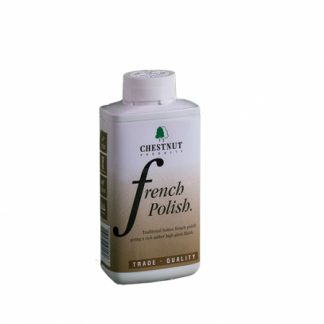 Confusingly, French Polish refers to a range of polishes (which would include Button Polish, White Polish, Garnet Polish etc) and also to a specific polish, French Polish. Chestnuts' French Polish is a traditional blend of solvent (methylated spirit) and a top quality unbleached shellac which is very similar to a Button Polish in colour. Applied either to bare timber or over a Shellac Sanding Sealer it is built up in many layers which have been described as being the thickness of a cigarette paper! French Polish gives the rich amber glow found on fine antique furniture and requires a very specific technique for application that is time consuming and laborious, but the final effect has to be seen to be believed and the satisfaction of achieving it is its own reward. A French Polish finish is not very hard wearing and is recommended for items that are going to be cared for.
Confusingly, French Polish refers to a range of polishes (which would include Button Polish, White Polish, Garnet Polish etc) and also to a specific polish, French Polish. Chestnuts' French Polish is a traditional blend of solvent (methylated spirit) and a top quality unbleached shellac which is very similar to a Button Polish in colour. Applied either to bare timber or over a Shellac Sanding Sealer it is built up in many layers which have been described as being the thickness of a cigarette paper! French Polish gives the rich amber glow found on fine antique furniture and requires a very specific technique for application that is time consuming and laborious, but the final effect has to be seen to be believed and the satisfaction of achieving it is its own reward. A French Polish finish is not very hard wearing and is recommended for items that are going to be cared for.
-

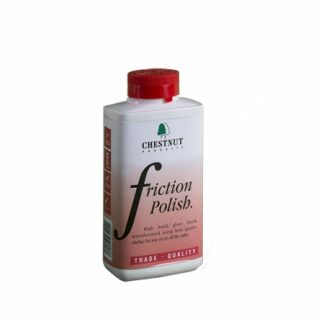 Friction Polish is a shellac based polish ideal for creating a high gloss finish on or off the lathe. It’s a great decorative finish and is ideal for small items but can be difficult to apply to larger items on the lathe (over about 8 inch diameter). The high amount of shellac in Friction Polish does two main things. Firstly it helps seal bare wood and give it a great shine, which is good. Sadly the price of this commodity shot up a few years ago when the shellac crop failed and it never went back down, meaning that the cost of the polish has also risen sharply. Nevertheless, Friction Polish remains one of the most popular finishes for turners. It can be applied to bare wood but is normally used over a sealer and any of the sealers in the Chestnut Products range are suitable for this. Applied with the lathe running it dries almost instantly and builds to a deep, rich shine very quickly. Avoid using too much as this can cause ‘rings’ to appear on the surface. Friction Polish can be applied off the lathe with great success, using it like a French Polish and rubbing it into the surface. This does require a large amount of elbow grease (sadly not something we supply) but the end result is well worth the effort!
Friction Polish is a shellac based polish ideal for creating a high gloss finish on or off the lathe. It’s a great decorative finish and is ideal for small items but can be difficult to apply to larger items on the lathe (over about 8 inch diameter). The high amount of shellac in Friction Polish does two main things. Firstly it helps seal bare wood and give it a great shine, which is good. Sadly the price of this commodity shot up a few years ago when the shellac crop failed and it never went back down, meaning that the cost of the polish has also risen sharply. Nevertheless, Friction Polish remains one of the most popular finishes for turners. It can be applied to bare wood but is normally used over a sealer and any of the sealers in the Chestnut Products range are suitable for this. Applied with the lathe running it dries almost instantly and builds to a deep, rich shine very quickly. Avoid using too much as this can cause ‘rings’ to appear on the surface. Friction Polish can be applied off the lathe with great success, using it like a French Polish and rubbing it into the surface. This does require a large amount of elbow grease (sadly not something we supply) but the end result is well worth the effort!
-

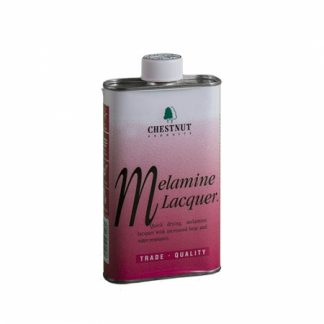
 When you’re looking for a hard-wearing, heat and water resistant, quick drying gloss lacquer you need look no further than Melamine Lacquer.
Based on cellulose technology, Melamine Lacquer has a catalyst suspended within it; when the lacquer is in the can it is inert but once applied and exposed to the air, the lacquer dries within five minutes like a cellulose and then the catalyst kicks in and the lacquer goes on to chemically cure to give a more durable coating. 90% of the curing process happens in the first seven days after application, making the lacquer very hard wearing, the remaining 10% of the process can take up to two weeks more to give maximum toughness, something you only need to consider if the lacquer is going to be subjected to extremely hard use.
Melamine Lacquer is designed to give a full gloss finish which will be achieved with a very careful application. It can be applied by brush (foam or bristle), cloth or by spraying. Where necessary, use cellulose thinners to dilute the product – especially helpful if working on a large area.
The gloss level of Melamine Lacquer can be increased by using burnishing cream once it has dried, and it can also be overcoated with friction polish (to increase the depth of the shine) or woodwax 22 or microcrystalline wax (for a more natural feel).
When you’re looking for a hard-wearing, heat and water resistant, quick drying gloss lacquer you need look no further than Melamine Lacquer.
Based on cellulose technology, Melamine Lacquer has a catalyst suspended within it; when the lacquer is in the can it is inert but once applied and exposed to the air, the lacquer dries within five minutes like a cellulose and then the catalyst kicks in and the lacquer goes on to chemically cure to give a more durable coating. 90% of the curing process happens in the first seven days after application, making the lacquer very hard wearing, the remaining 10% of the process can take up to two weeks more to give maximum toughness, something you only need to consider if the lacquer is going to be subjected to extremely hard use.
Melamine Lacquer is designed to give a full gloss finish which will be achieved with a very careful application. It can be applied by brush (foam or bristle), cloth or by spraying. Where necessary, use cellulose thinners to dilute the product – especially helpful if working on a large area.
The gloss level of Melamine Lacquer can be increased by using burnishing cream once it has dried, and it can also be overcoated with friction polish (to increase the depth of the shine) or woodwax 22 or microcrystalline wax (for a more natural feel).

-
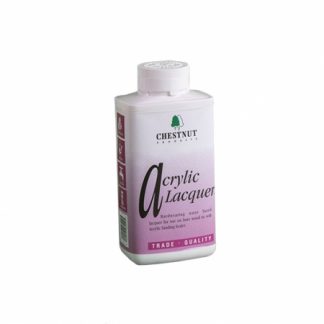
 If you need to get away from the smell and flammability of our cellulose based lacquers this is an ideal option.
This water based lacquer has virtually no smell and is totally non-flammable. Don’t be fooled though, this product is extremely hard wearing and gives a full gloss finish.
Being water based it is slightly slower drying, taking about twenty minutes to be touch dry. If you want to apply a second coat it should be left two hours before doing so, although a wax can be applied if required after about thirty minutes.
This product can be sprayed if suitable equipment is available, or can be applied by cloth or brush. We recommend foam brushes for application as this keeps the foaming action of acrylics to a minimum.
If you need to get away from the smell and flammability of our cellulose based lacquers this is an ideal option.
This water based lacquer has virtually no smell and is totally non-flammable. Don’t be fooled though, this product is extremely hard wearing and gives a full gloss finish.
Being water based it is slightly slower drying, taking about twenty minutes to be touch dry. If you want to apply a second coat it should be left two hours before doing so, although a wax can be applied if required after about thirty minutes.
This product can be sprayed if suitable equipment is available, or can be applied by cloth or brush. We recommend foam brushes for application as this keeps the foaming action of acrylics to a minimum.
-

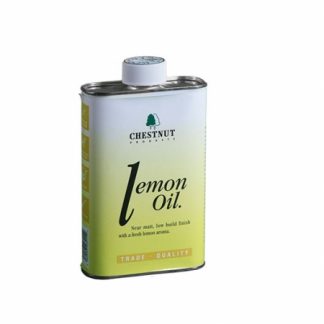 If you’re looking for a finish that won’t change the colour of your timber, won’t overpower the natural beauty of the wood with a high gloss but will still protect the timber and smell nice, well, you’re in the right place! Lemon Oil is a clear, low build finish. By that we mean that it’s a very thin liquid with a very low solids content, so no matter how much you apply it’s not going to build up to a discernible visible film on the surface. Instead it soaks in and seals the surface, offering a level of water resistance and protection against handling. Normally applied with a brush or a cloth it’s very easy to use and covers well and doesn’t usually show overlaps, so it’s ideal for large areas which often look better without a high gloss. And as you might expect, it has a pleasant lemon aroma too, although this does fade after a while.
If you’re looking for a finish that won’t change the colour of your timber, won’t overpower the natural beauty of the wood with a high gloss but will still protect the timber and smell nice, well, you’re in the right place! Lemon Oil is a clear, low build finish. By that we mean that it’s a very thin liquid with a very low solids content, so no matter how much you apply it’s not going to build up to a discernible visible film on the surface. Instead it soaks in and seals the surface, offering a level of water resistance and protection against handling. Normally applied with a brush or a cloth it’s very easy to use and covers well and doesn’t usually show overlaps, so it’s ideal for large areas which often look better without a high gloss. And as you might expect, it has a pleasant lemon aroma too, although this does fade after a while.
-

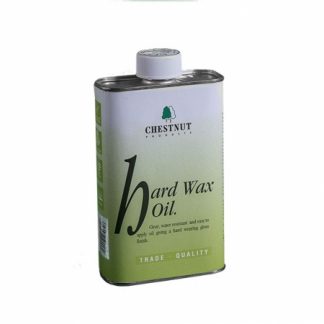
 If you’re looking for a clear finish that is tough, hardwearing and gives a bright gloss yet is still very easy to apply, even on larger areas, you’re in the right place.
Hard Wax Oil is a particular blend of tough oils combined with special waxes which dries to an exceptionally resilient finish. Ideal for anything that is going to be subjected to water splashes or a lot of handling this oil may not be indestructible but it will stand up to a lot of abuse.
It retains the ease of application typical of an oil and it stays wet long enough to get a smooth, even finish – even on large areas – but is touch dry and tack free in about 20 minutes, and better yet is ready for a second coat after about four hours (in normal conditions).
Hard Wax Oil will build to a bright gloss finish after 2-3 coats. Rub down lightly between coats with a fine abrasive. Once hard dry (allow at least 24 hours) it can be brought to an even brighter shine using either the buffing wheel system or burnishing cream.
For a not-quite-so-bright finish use a mild abrasive to reduce the gloss. For best results lubricate the abrasive with microcrystalline wax to retain the toughness of the oil.
If you’re looking for a clear finish that is tough, hardwearing and gives a bright gloss yet is still very easy to apply, even on larger areas, you’re in the right place.
Hard Wax Oil is a particular blend of tough oils combined with special waxes which dries to an exceptionally resilient finish. Ideal for anything that is going to be subjected to water splashes or a lot of handling this oil may not be indestructible but it will stand up to a lot of abuse.
It retains the ease of application typical of an oil and it stays wet long enough to get a smooth, even finish – even on large areas – but is touch dry and tack free in about 20 minutes, and better yet is ready for a second coat after about four hours (in normal conditions).
Hard Wax Oil will build to a bright gloss finish after 2-3 coats. Rub down lightly between coats with a fine abrasive. Once hard dry (allow at least 24 hours) it can be brought to an even brighter shine using either the buffing wheel system or burnishing cream.
For a not-quite-so-bright finish use a mild abrasive to reduce the gloss. For best results lubricate the abrasive with microcrystalline wax to retain the toughness of the oil.

-


 If you’re looking for a clear finish that is tough, hardwearing and gives a satin lustre yet is still very easy to apply, even on larger areas, you’re in the right place.
Hard Wax Oil is a particular blend of tough oils combined with special waxes which dries to an exceptionally resilient finish. Ideal for anything that is going to be subjected to water splashes or a lot of handling this oil may not be indestructible but it will stand up to a lot of abuse.
It retains the ease of application typical of an oil and it stays wet long enough to get a smooth, even finish – even on large areas – but is touch dry and tack free in about 20 minutes, and better yet is ready for a second coat after about four hours (in normal conditions).
Hard Wax Oil will build to a bright gloss finish after 2-3 coats. Rub down lightly between coats with a fine abrasive. Once hard dry (allow at least 24 hours) it can be brought to an even brighter shine using either the buffing wheel system or burnishing cream.
For a not-quite-so-bright finish use a mild abrasive to reduce the gloss. For best results lubricate the abrasive with microcrystalline wax to retain the toughness of the oil.
If you’re looking for a clear finish that is tough, hardwearing and gives a satin lustre yet is still very easy to apply, even on larger areas, you’re in the right place.
Hard Wax Oil is a particular blend of tough oils combined with special waxes which dries to an exceptionally resilient finish. Ideal for anything that is going to be subjected to water splashes or a lot of handling this oil may not be indestructible but it will stand up to a lot of abuse.
It retains the ease of application typical of an oil and it stays wet long enough to get a smooth, even finish – even on large areas – but is touch dry and tack free in about 20 minutes, and better yet is ready for a second coat after about four hours (in normal conditions).
Hard Wax Oil will build to a bright gloss finish after 2-3 coats. Rub down lightly between coats with a fine abrasive. Once hard dry (allow at least 24 hours) it can be brought to an even brighter shine using either the buffing wheel system or burnishing cream.
For a not-quite-so-bright finish use a mild abrasive to reduce the gloss. For best results lubricate the abrasive with microcrystalline wax to retain the toughness of the oil.

-
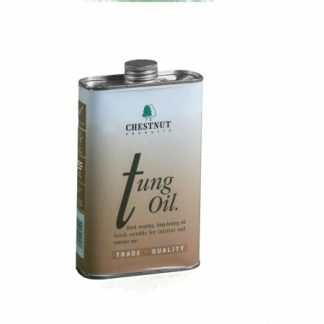 Tung Oil, or Chinese Wood Oil as it’s sometimes called, is a natural oil derived from the seed of the nut of the tung tree. The jury is out as to whether it can spark a nut allergy. Tung Oil air dries to form a tough, hard film that has a fairly strong amber tint. Because it doesn’t have any solvent or driers in it it can take a while to dry, and dependant on conditions this can be up to a week although 48 hours is more common. As with most finishes a thinner coat will dry quicker. Normally applied with a brush or cloth.
Tung Oil, or Chinese Wood Oil as it’s sometimes called, is a natural oil derived from the seed of the nut of the tung tree. The jury is out as to whether it can spark a nut allergy. Tung Oil air dries to form a tough, hard film that has a fairly strong amber tint. Because it doesn’t have any solvent or driers in it it can take a while to dry, and dependant on conditions this can be up to a week although 48 hours is more common. As with most finishes a thinner coat will dry quicker. Normally applied with a brush or cloth. -

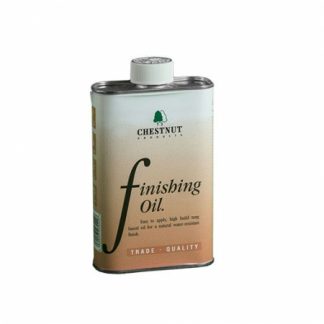
 Chestnut Finishing Oil is Chestnuts' version of Danish Oil* and uses Tung Oil as its base but with the addition of solvents and driers. This aids the drying of the product and speeds it up dramatically, so that it’s dry within eight hours. It has a pale amber colour and dries to a hard yet flexible film which is very hardwearing and water resistant.
For a high gloss finish apply several coats with a light rub down between coats; after 5 or 6 coats a good sheen should be visible.
Finishing Oil is normally applied by cloth but on larger areas a brush can be used very successfully.
Chestnut Finishing Oil is Chestnuts' version of Danish Oil* and uses Tung Oil as its base but with the addition of solvents and driers. This aids the drying of the product and speeds it up dramatically, so that it’s dry within eight hours. It has a pale amber colour and dries to a hard yet flexible film which is very hardwearing and water resistant.
For a high gloss finish apply several coats with a light rub down between coats; after 5 or 6 coats a good sheen should be visible.
Finishing Oil is normally applied by cloth but on larger areas a brush can be used very successfully.

-

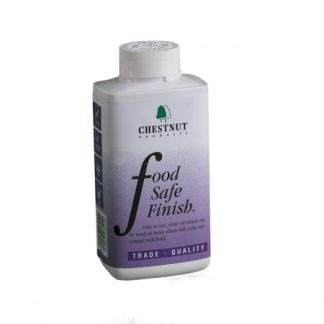 Food Safe Finish is a clear, food grade mineral oil. Chestnut use a thin grade of oil to allow it to soak into bare timber which then protects it against water splashes etc whilst not tainting or affecting the food in any way. It dries to a fairly matt finish; it is however ideal to use for wet sanding and when used with a very fine abrasive it can give an exceptionally smooth surface which has its own gentle glow. Apply with a clean cloth or brush direct onto bare wood, up to three coats are recommended. If the oil sits on the surface and won’t soak in it means the timber has absorbed as much as it can and no further coats are needed. Any surplus can be removed with a clean cloth if required. Depending on the way the item is used it might be necessary to top-up the finish, especially if it is washed regularly.
Food Safe Finish is a clear, food grade mineral oil. Chestnut use a thin grade of oil to allow it to soak into bare timber which then protects it against water splashes etc whilst not tainting or affecting the food in any way. It dries to a fairly matt finish; it is however ideal to use for wet sanding and when used with a very fine abrasive it can give an exceptionally smooth surface which has its own gentle glow. Apply with a clean cloth or brush direct onto bare wood, up to three coats are recommended. If the oil sits on the surface and won’t soak in it means the timber has absorbed as much as it can and no further coats are needed. Any surplus can be removed with a clean cloth if required. Depending on the way the item is used it might be necessary to top-up the finish, especially if it is washed regularly.
-

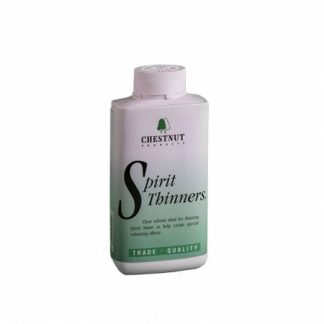 This clear, slower drying solvent is primarily for thinning our Spirit Stain to give delicate wash effects without affecting the colour (as methylated spirit would). It can also be used to dilute Friction Polish or French Polish if needed (usually only when the cap has been left off and the product has thickened up). It’s also suitable for use in making french polish if you want to dissolve shellac flakes in it.
This clear, slower drying solvent is primarily for thinning our Spirit Stain to give delicate wash effects without affecting the colour (as methylated spirit would). It can also be used to dilute Friction Polish or French Polish if needed (usually only when the cap has been left off and the product has thickened up). It’s also suitable for use in making french polish if you want to dissolve shellac flakes in it.
-

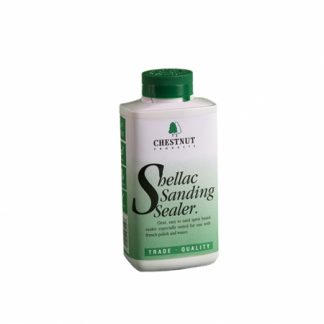
 Shellac Sanding Sealer is the traditional way of sealing timber prior to applying a polish or a wax.
Chestnuts version has a high percentage of real shellac which means it does the job extremely well, dissolved in an ethanol solution to make it easy to apply and quick drying.
Applied by cloth, brush or spray it dries in about 20 minutes, making it very popular for cabinet and architectural work as it is easy to keep a wet edge running. It is also popular with woodturners and highlights the natural grain of the timber extremely well.
Sand back lightly after application and apply Friction Polish, French Polish or any of Chestnuts waxes on top.
Conforms to EN71 Part 3 – suitable for toys and nursery furniture.
Shellac Sanding Sealer is the traditional way of sealing timber prior to applying a polish or a wax.
Chestnuts version has a high percentage of real shellac which means it does the job extremely well, dissolved in an ethanol solution to make it easy to apply and quick drying.
Applied by cloth, brush or spray it dries in about 20 minutes, making it very popular for cabinet and architectural work as it is easy to keep a wet edge running. It is also popular with woodturners and highlights the natural grain of the timber extremely well.
Sand back lightly after application and apply Friction Polish, French Polish or any of Chestnuts waxes on top.
Conforms to EN71 Part 3 – suitable for toys and nursery furniture.

-

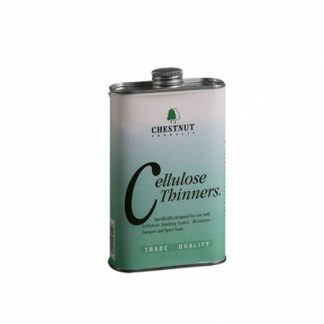 This pure cellulose solvent is a high quality dilutant for our cellulose based products, such as Cellulose Sanding Sealer and Melamine Lacquer. Thinning these products can help to make them easier to apply, especially over larger areas as it helps them flow out. Cellulose Thinners is also useful for cleaning any spills you may have in the workshop and is strong enough to help clean most things, taking care to ensure that it does not attack It can also be used to thin Spirit Stain to give a delicate wash effects, although spirit thinners is the better option for this.
This pure cellulose solvent is a high quality dilutant for our cellulose based products, such as Cellulose Sanding Sealer and Melamine Lacquer. Thinning these products can help to make them easier to apply, especially over larger areas as it helps them flow out. Cellulose Thinners is also useful for cleaning any spills you may have in the workshop and is strong enough to help clean most things, taking care to ensure that it does not attack It can also be used to thin Spirit Stain to give a delicate wash effects, although spirit thinners is the better option for this.
-

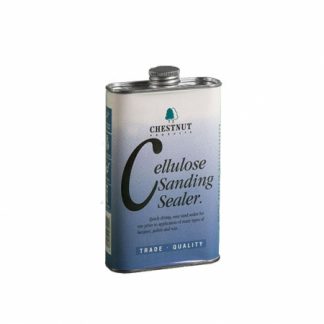
 Good finishing requires a good foundation, and Cellulose Sanding Sealer is probably the best way of providing one. Compatible with everything in the Chestnut Products range that benefits from the use of a sanding sealer (which is pretty much everything apart from oil finishes!) it is superbly universal.
The purpose of a sanding sealer is manifold.
Good finishing requires a good foundation, and Cellulose Sanding Sealer is probably the best way of providing one. Compatible with everything in the Chestnut Products range that benefits from the use of a sanding sealer (which is pretty much everything apart from oil finishes!) it is superbly universal.
The purpose of a sanding sealer is manifold.
- It seals the open pores of the timber prior to the application of the next coat, meaning that more of it stays on the surface and less of the finish is needed. Not only does this make it economical, when finishing the thinner the applied coat the less likely it is to get damaged, so a sanding sealer will help the top coats be more resilient.
- Sanding Sealers also bind the loose fibres of the timber together giving a more solid foundation for the next coat, which helps make sure the final finish is able to adhere properly and thus be more durable.
- They also include a sanding agent which acts as a lubricant to make the sanding process easier – the sanding agent also stands slightly proud of the surface of the sealer and it is this that is denibbed – the sealer itself should still be intact after sanding.

-

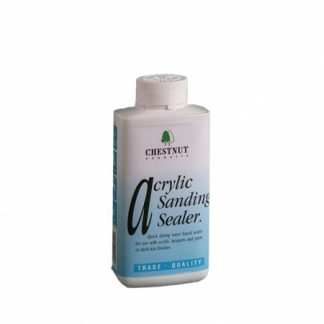
 This water based sanding sealer gets the job done without the smell associated with solvent based sealers and also with no flammability issues – ideal for asthma suffers and anyone with an aversion to solvent based finishes.
Applied by cloth, brush or spray (Chestnuts' foam brushes are especially good with this) the sealer dries in about 5 minutes and can be overcoated with most compatible finishes after about 20 minutes although two hours should be left if using Acrylic Lacquer.
Acrylic Sanding Sealer sands easily with a fine abrasive and is supplied ready for use.
This water based sanding sealer gets the job done without the smell associated with solvent based sealers and also with no flammability issues – ideal for asthma suffers and anyone with an aversion to solvent based finishes.
Applied by cloth, brush or spray (Chestnuts' foam brushes are especially good with this) the sealer dries in about 5 minutes and can be overcoated with most compatible finishes after about 20 minutes although two hours should be left if using Acrylic Lacquer.
Acrylic Sanding Sealer sands easily with a fine abrasive and is supplied ready for use.

-
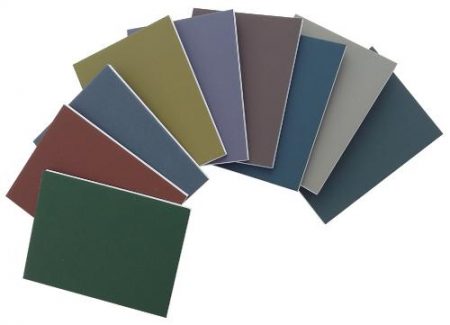 Designed specifically with pen turners in mind. This finishing kit consists of nine different, colour coded, foam backed sanding pads measuring 10cm (4") x 8.5cm (3.1/4"). Includes the following grit sizes: 1500 - Rust 1800 - Green 2400 - Black 3200 - Tan 3600 - Wine/Brown 4000 - Teal 6000 - Purple 8000 - Royal Blue 12000 - Grey Suitable for wood and acrylic blanks .
Designed specifically with pen turners in mind. This finishing kit consists of nine different, colour coded, foam backed sanding pads measuring 10cm (4") x 8.5cm (3.1/4"). Includes the following grit sizes: 1500 - Rust 1800 - Green 2400 - Black 3200 - Tan 3600 - Wine/Brown 4000 - Teal 6000 - Purple 8000 - Royal Blue 12000 - Grey Suitable for wood and acrylic blanks . -
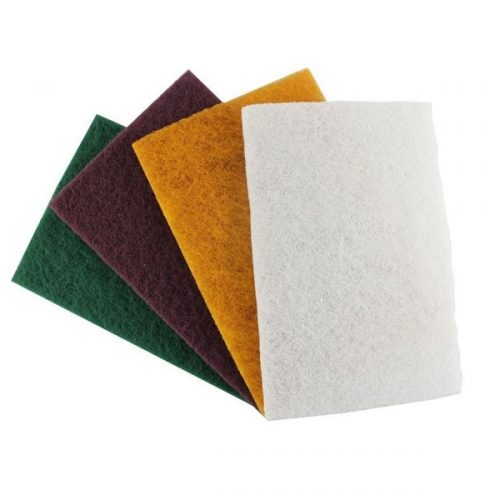 Fine finishing starts with good preparation! Use these mildly abrasive pads after sanding for that final smoothing process to give a near-perfect surface prior to applying any finish. Very long lasting, these pads are also very flexible and do not crumble, thus avoiding any fear of contamination of your work. Exercise care when using these pads with the lathe revolving.
Fine finishing starts with good preparation! Use these mildly abrasive pads after sanding for that final smoothing process to give a near-perfect surface prior to applying any finish. Very long lasting, these pads are also very flexible and do not crumble, thus avoiding any fear of contamination of your work. Exercise care when using these pads with the lathe revolving. -
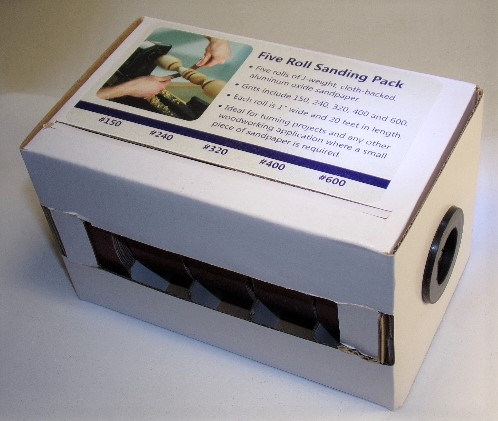 1" x 20' abrasive in a convenient dispenser. Perfect for spindle, pen, or any turning where small strips are needed. This convenient dispenser is loaded with five 1" x 20' rolls of cloth backed aluminum oxide abrasive. Each dispenser pack contains one roll of 150, 240, 320, 400 & 600 grit abrasive. Just pull out and tear off the length of abrasive strip you need.
1" x 20' abrasive in a convenient dispenser. Perfect for spindle, pen, or any turning where small strips are needed. This convenient dispenser is loaded with five 1" x 20' rolls of cloth backed aluminum oxide abrasive. Each dispenser pack contains one roll of 150, 240, 320, 400 & 600 grit abrasive. Just pull out and tear off the length of abrasive strip you need. -
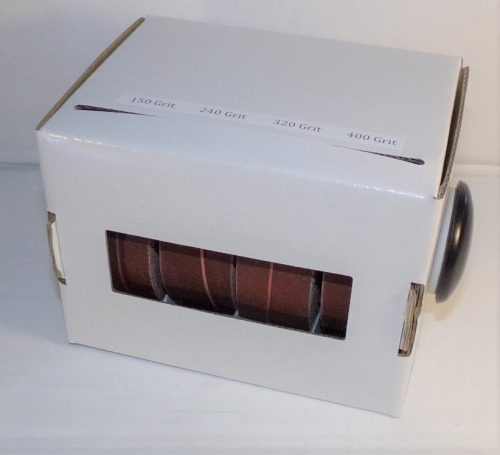 1" x 20' abrasive in a convenient dispenser. Perfect for spindle, pen, or any turning where small strips are needed. This convenient dispenser is loaded with four or 1" x 20' rolls of cloth backed aluminum oxide abrasive. Each dispenser pack contains one roll of 150, 240, 320 & 400 grit abrasive. Just pull out and tear off the length of abrasive strip you need.
1" x 20' abrasive in a convenient dispenser. Perfect for spindle, pen, or any turning where small strips are needed. This convenient dispenser is loaded with four or 1" x 20' rolls of cloth backed aluminum oxide abrasive. Each dispenser pack contains one roll of 150, 240, 320 & 400 grit abrasive. Just pull out and tear off the length of abrasive strip you need. -
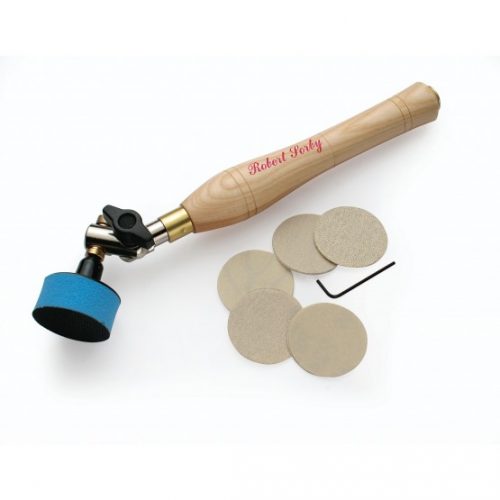 The Sandmaster is an essential part of every turner's tool kit. It comes with 5 different grits of abrasive to take even the roughest projects to a glass-like finish every time. It avoids an uneven finish often associated with hand sanding and there is no danger of catching hands on the revolving project. There is little or no surface damage/head build-up, as there is with power sanding and there is no cable to trip over. Head articulates to access even the most difficult areas. Sponge head is ideal for working in tight spaces. Sandmaster creates a fraction of the dust generated by power sanding. It can be adapted to take a polishing mop.
The Sandmaster is an essential part of every turner's tool kit. It comes with 5 different grits of abrasive to take even the roughest projects to a glass-like finish every time. It avoids an uneven finish often associated with hand sanding and there is no danger of catching hands on the revolving project. There is little or no surface damage/head build-up, as there is with power sanding and there is no cable to trip over. Head articulates to access even the most difficult areas. Sponge head is ideal for working in tight spaces. Sandmaster creates a fraction of the dust generated by power sanding. It can be adapted to take a polishing mop. -
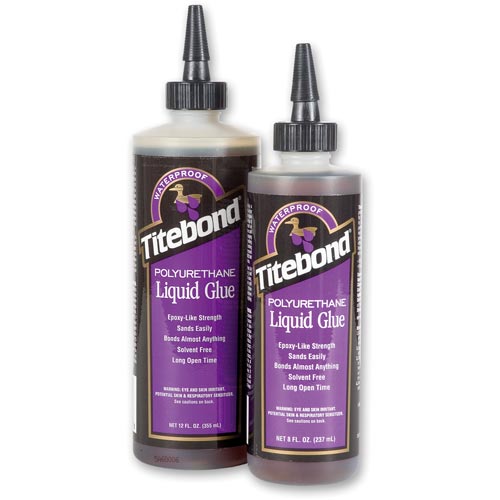 High strength waterproof glue specially formulated for multi-purpose applications. In addition to its superior wood-to-wood performance, it is equally effective for metal, ceramic, plastic, Corian, stone and other porous/non-porous materials. Ready to use, offering excellent sandability and unaffected by finishes. Thicker than traditional polyurethanes it provides a non-running, non-drip glue line for more precise applications. Polyurethane glues cure by moisture and an effervescence is a by-product of this, there is no strength in this and it is easily sanded off when dry, the glue will not become brittle with age and will not expand or contract in the joint. In very dry timber it may be necessary to moisten one surface to encourage curing to take place.
High strength waterproof glue specially formulated for multi-purpose applications. In addition to its superior wood-to-wood performance, it is equally effective for metal, ceramic, plastic, Corian, stone and other porous/non-porous materials. Ready to use, offering excellent sandability and unaffected by finishes. Thicker than traditional polyurethanes it provides a non-running, non-drip glue line for more precise applications. Polyurethane glues cure by moisture and an effervescence is a by-product of this, there is no strength in this and it is easily sanded off when dry, the glue will not become brittle with age and will not expand or contract in the joint. In very dry timber it may be necessary to moisten one surface to encourage curing to take place.

